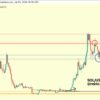The short squeeze ratio in Bitcoin (BTC) contracts is lower this year than in previous years, as shown by the “Bitfinex Alpha 92” relationship points out. According to Bitfinex analysts, this may be related to the fact that “whales” believe in a more substantial rally for BTC and a turn towards direct investments in Bitcoin, bypassing derivatives markets.
A short squeeze occurs when the price of an asset rises sharply and forces short investors to buy more and avoid significant losses. The report suggests that this change in behavior favors direct investments in BTC rather than speculative short selling.

Bitcoin hit a new high for the year, hitting $52,700 on February 20, marking a 25% increase from January and a 207% increase from its November 2022 lows. This recent surge puts Bitcoin nearly 29% above below its highest value ever, in a context of growing demand and limited supply.
The cryptocurrency’s performance clashes with rising inflation, as indicated by recent reports on the Consumer Price Index (CPI) and Producer Price Index (PPI), and continued investment in Exchange-Traded Bitcoin Spot Funds (ETFs). Analysts note that the market’s resilience can be partially attributed to these factors, calling into question previous market predictions.
Further analysis of Bitcoin’s supply distribution indicates bullish sentiment among holders. Currently, only 11% of Bitcoin’s total supply is at a loss, with only 6% of long-term holders in deficit. Such distribution patterns historically signal the start of a bull market phase.
The broader economic landscape, characterized by persistent inflation and reduced consumer spending, has led to revised forecasts for potential rate cuts, now postponed to late spring or early summer.























